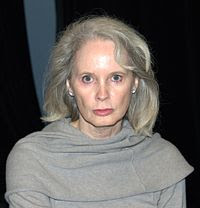 When I was about eleven, I wrote a story for English class about a teenager who wanted to be a model. I found it a few years later and my budding feminist self was mortified: it seemed the sort of thing written by an eleven year old reading certain magazines, the worst possible topic for a young girl who understandably wants to write about the only thing young girls can write about, which is wanting.
When I was about eleven, I wrote a story for English class about a teenager who wanted to be a model. I found it a few years later and my budding feminist self was mortified: it seemed the sort of thing written by an eleven year old reading certain magazines, the worst possible topic for a young girl who understandably wants to write about the only thing young girls can write about, which is wanting.
But having just finished Mary Gaitskill’s Veronica – a stunning book, like all hers, though I have a preference for the stories – I have a little more compassion for my younger self. Modeling is for the novel a variation on the hunger for experience that puts things in motion. As Allison, the novel’s narrator, puts it, “I said I had not gone to New York to be a model, and I hadn’t. I’d gone there for life and sex and cruelty. Not something you learn in community college.”
Beauty, Dorothy Allison wrote, tells an ugly story, and it is the thing that teaches Allison life and sex and cruelty. Beauty and the things that go with it – youth and sophistication, or at least the appearance of it- separate Allison from Veronica, a woman with whom she forms an unlikely friendship.
Beauty and the power imbalance that it creates and embodies challenge our sense of ourselves as good and kind people, and of our world as one where empathy is possible. Good liberals who reject the cruelty of winner-take-all ideologies hesitate – perhaps with good reason – when it comes to beauty and sex. It’s no good for the rich to say more and more is never enough – not everyone agrees on this, of course, but the imperative is clear enough for many of us. But if the beautiful and talented want more experience, more sex, more life – who are those of us with less beauty and talent to stand in their way? Certain strains of feminism have challenged women on this point – perhaps this is why its ideals seem so particularly arduous.
Allison’s friends tell her how good she is for standing by Veronica as she struggles with AIDS and her other friends abandon her. Allison knows better. She understands the cruelty of pity. In less extreme circumstances, I’ve had friendships where I was close to each of these roles, and her brilliant evocation of the dynamic is devastating.
so-called voice of a generation authors
Like those whose names rhyme with, um, something that rhymes with Eugenides?
It is a truth universally acknowledged that novels middle-aged dudes about why English departments suck are Timeless Art.
*by* middle aged dudes. But about would work too.